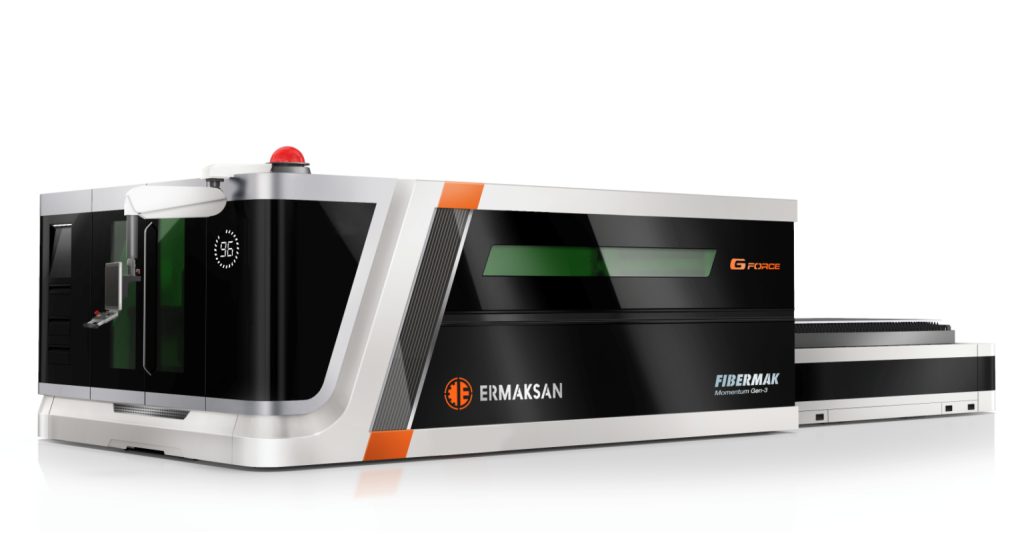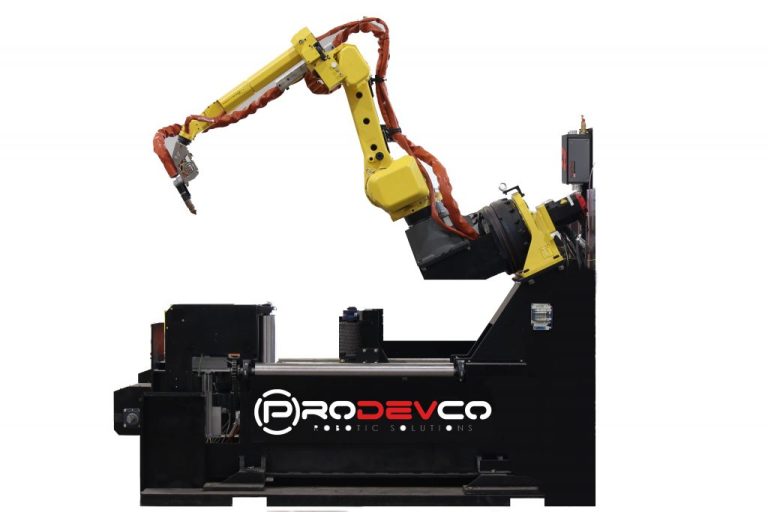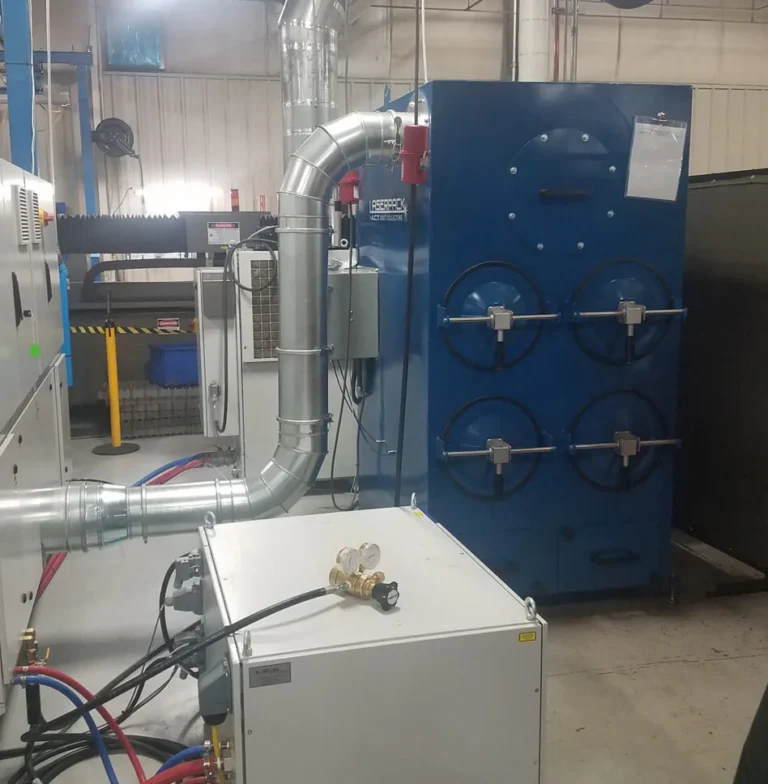I am Kyle Bialozynski, Sales Executive at Mac-Tech, and I grew up in the Midwest where uptime, straight talk, and getting parts out the door safely and profitably are what matter. I spend my days on shop floors solving real bottlenecks with real data. If you cut heavy plate for construction, ag, off-highway or structural work, you have felt the squeeze on cycle time, energy costs, and qualified labor. A properly specified 12kW HSG fiber laser can change that. I will prove it with your material, in your plant, with your parts.
Prove 12kW HSG Fiber Performance on Your Thick Plate With Me Onsite
I do not ask you to take a brochure’s word for it. I bring sample programs, fixtures, and gas setups to your site or our demo center, then cut your A36, HRPO, AR, 50 ksi and 100 ksi plate on a 12kW HSG. We measure pierce, cut time, taper, dross, HAZ, and kWh at the wall. We compare that to your plasma or older laser runs, then tune until the numbers make sense for your jobs.
- Sales-based insight and solutions:
- Machine recommendations:
- HSG 12kW flatbed with pallet changer in 5×10 or 6×12, with Precitec or Raytools auto-focus head and active height control.
- For heavy plate and mixed sheet, I recommend the 4020 table size to keep 6×12 plate in one clamp and allow smart nesting.
- Technical and logistical knowledge:
- Power: 480V 3 phase, typical 100 to 150A service for a 12kW with chiller and dust collector.
- Fume extraction: 4,000 to 6,000 CFM with sectional downdraft.
- Gas: O2 line 150 to 300 psi, N2 350 to 450 psi from bulk or generator, optional air booster to 150 to 350 psi with -40 F dew point.
- Progressive flow: Stage plate at infeed racks, auto-load to laser, parts kit directly to brake and weld cells to reduce forklift touches.
G-FORCE FIBER LASER
HIGH-DEFINITION PLASMA CUTTING MACHINE
The Ermak EPL high-definition plasma cutting systems are the latest in Ermak’s line of HD plasma cutters. The EPL comes standard equipped with the Hypertherm TrueHole Package, which includes:
- Hypertherm 130XD…
Slash Piercing Time and Heat Affected Zone on 3/8 to 1-1/2 inch Plate
Faster piercing is where 12kW fiber beats plasma every shift. Less heat means less distortion and less grinding.
Real cut and pierce data I routinely record in Midwest shops:
- 3/8 in A36 with oxygen
- Pierce: 0.6 to 0.9 sec per hole on 12kW fiber vs 2 to 4 sec on high-def plasma
- HAZ: roughly 0.5 to 1.0 mm on fiber vs 2 to 3 mm on plasma
- 1.0 in A36 with oxygen
- Pierce: 2 to 4 sec on fiber vs 6 to 10 sec on plasma
- HAZ: roughly 0.8 to 1.5 mm on fiber vs 3 to 4 mm on plasma
- 1.5 in structural steel with oxygen
- Pierce: 5 to 8 sec on fiber vs 10 to 15 sec on plasma
- HAZ: roughly 1 to 2 mm on fiber vs 4 to 6 mm on plasma
- Result: fewer pierces blown out, cleaner holes, less slag expulsion near holes and corners.
- Sales-based insight and solutions:
- We apply multi-stage pierce and ramp-in strategies that protect tip life and keep heat low on thicker plate.
- We tune for lower rework downstream, not just the fastest feedrate.
- Machine recommendations:
- HSG 12kW with high dynamic height control and pierce libraries per thickness.
- Lens protection with real-time anti-collision and breakaway head.
- Technical setup that matters:
- Oxygen cutting on heavy plate with 2.0 to 2.5 mm nozzle, positive focus offset roughly +1.5 to +3.0 mm, 0.6 to 1.2 bar O2, standoff 0.8 to 1.2 mm.
- For structural holes, use reduced pierce power with short dwell and immediate micro-lead-ins to limit HAZ bloom.
Cut More Parts per kWh With the Right Gas Strategy Including Air Assist for Mild Steel
Energy and gas strategy move the ROI needle. Fiber uses less wall power than plasma and, with air assist on mild steel, you reduce nitrogen spend while increasing parts per hour.
- Real energy and gas comparisons I share during trials:
- Example part: 10 x 10 in base plate, 1.0 in A36, 40 in perimeter, four 0.5 in holes
- 12kW fiber with oxygen: 2.2 to 2.8 min total cycle, roughly 0.6 to 1.0 kWh at the wall
- High-def plasma: 3.0 to 4.0 min total cycle, roughly 2.5 to 4.0 kWh at the wall
- Air assist for mild steel up to 1/2 in
- Often replaces nitrogen while maintaining acceptable edge for paint and powder
- Typical 12 to 18 bar air with clean, dry, oil-free supply, 1.8 to 2.5 mm nozzle
- Sales-based insight and solutions:
- I map your part mix to a gas matrix. Oxygen for thick plate, air for 10 gauge to 1/2 in mild steel, nitrogen for stainless and when bright edge is required.
- If you want to move off bulk nitrogen, I size an air system and booster that keep cut quality consistent.
- Machine recommendations:
- HSG with integrated gas controller for O2, N2, air recipes and automatic changeover.
- Inline filtration and -40 F dew point air dryer for air cutting reliability.
- Technical and logistical knowledge:
- Air system: oil-free screw compressor sized for duty cycle, booster to 200 to 350 psi, filters and dryers close to the machine.
- Nitrogen generator option for stainless: purity 99.9 to 99.99 percent depending on edge requirement.
- Energy monitoring: I add a simple power meter to show kWh per nest and kWh per part for proof.
Eliminate Taper and Dross Through Hands On Tuning of Focus Nozzle and Height Control
Plasma taper of 1 to 3 degrees eats tolerance on thick flanges and brackets. With a 12kW HSG fiber we regularly see under 0.5 degree taper with correct setup and maintenance.
- Real edge quality outcomes:
- Edge taper: typically 0.1 to 0.5 degree on fiber vs 1 to 3 degrees on plasma for 3/8 to 1.25 in
- Dross: minimal to none with correctly tuned focus and gas, no secondary grinding on most profiles
- Sales-based insight and solutions:
- I train operators on three variables that matter most for thick plate: focus position, standoff control, and nozzle size. We lock in recipes so all shifts match.
- We add a daily nozzle check and weekly beam centering routine to keep cut straightness tight.
- Machine recommendations:
- Auto-focus cutting head with closed-loop capacitive height control, real-time corner power reduction, and kerf width compensation.
- Vision or laser beam centering kit and easy nozzle alignment tools.
- Technical knowledge you can use:
- Nitrogen thick section: 2.5 to 3.0 mm nozzle, negative focus roughly -1.0 to -3.0 mm, 18 to 25 bar N2, standoff 0.8 to 1.0 mm.
- Oxygen heavy plate: small incremental lead-ins and corner slowdowns to prevent overburn, plus reduced duty at exit of tight pockets.
- Confirm table flatness and plate contact to keep torch perpendicular. Use tabbing and bridge cuts to manage heat on long slots.
Keep 12kW Throughput Flowing With Automation That Does Not Bottleneck
A fast cutting head is useless if load, unload, part sorting, or skeleton removal choke flow. We build the whole cell around your takt time.
- Sales-based insight and solutions:
- We calculate your parts per hour at the nest level, then size automation so the laser is never waiting on the next sheet or on an operator to clear parts.
- We map a progressive assembly process where cut kits move straight to brake, weld and paint with minimal touches.
- Machine and cell recommendations:
- HSG pallet changer standard, plus tower load and unload with 6 to 14 shelves for lights out.
- Side discharge conveyors for small parts, skeleton breaker or sectioning program to speed scrap removal.
- Optional part sorting robot for high mix repetitive parts and a vertical buffer to stage kits for the brake.
- Technical and logistical knowledge:
- Floor plan: 6×12 or 8×20 tables require clear forklift aisles and rack positions that match your receiving flow.
- Dust collector sized for tower duty cycle, plus protected sheet detection to stop double-sheet events.
- Standardization of pallets and skids so cut kits can go directly to downstream cells without repacking.
Quantify ROI and Growth for Midwest Shops With Real Cut Data Financing and Service
I build ROI with your numbers, not estimates. We include pierce counts, inches of cut, kWh, gas cost, consumables, and cleanup minutes.
- Real ROI examples I have delivered:
- Shop running 1 inch plate base plates and gussets, two shifts
- Cycle time reduction 20 to 35 percent when combining faster pierce with no secondary grinding
- Energy per part cut by 50 to 70 percent compared to plasma on the same parts
- Labor savings 1 to 2 hours per day on cleanup, plus better fit-up in welding
- Payback commonly 12 to 24 months depending on mix and hours
- Sales-based insight and solutions:
- I show you three gas paths: oxygen for heavy, air for mild mid-thickness, nitrogen when edge is cosmetic. We lock in the lowest cost per part without compromising downstream.
- I structure a ramp-in plan with training and first article support so your team is productive in week one.
- Machine recommendations:
- HSG 12kW with 4020 table, pallet changer, tower, and gas controller as a ready-to-run package.
- Add remote diagnostics and spare optics kit to protect uptime.
- Financing and service:
- Flexible terms 36 to 84 months, Section 179 guidance through your tax pro, and seasonal payment structures for ag and construction cycles.
- Midwest-based service from Mac-Tech with phone triage, remote support, and typical 24 to 48 hour on-site response. Parts and consumables stocked in Milwaukee.
- Progressive flow and efficiency:
- We create nested kits that match weld cells. Labeling at the laser with part ID and job number cuts search time.
- Standard work for skeleton removal, part sorting, and delivery to brake cells reduces forklift moves and WIP.
FAQ
How thick can a 12kW HSG fiber laser reliably cut mild steel?
- Italicized answer: Up to 1.5 inches with oxygen in many cases, with consistent quality when gas, focus, and height control are tuned.*
Will fiber replace my plasma entirely?
- Italicized answer: Many shops keep plasma for very thick, very large, or rough-tolerance parts, but shift most 3/8 to 1.25 inch work to fiber for quality and lower total cost.*
Is air assist really good enough for production mild steel?
- Italicized answer: Yes for many parts up to about 1/2 inch, especially if edges are painted or powder coated. It cuts gas cost sharply while keeping cycle times fast.*
What utilities do I need to be ready on install day?
- Italicized answer: 480V 3 phase power, chiller and dust collector connections, clean dry air, oxygen and nitrogen lines or an air booster if you plan to air cut.*
How do we protect throughput on high mix jobs?
- Italicized answer: Use tower automation, smart nesting, tabbing strategies, and kit flow to brake and weld cells so the laser never waits and parts do not pile up.*
- What maintenance is critical for thick plate quality?
- Italicized answer: Daily nozzle and lens checks, weekly beam centering, table flatness checks, and filter changes on air and gas systems keep cuts straight and clean.*
If you want to see how these numbers look with your prints and steel, I will meet you on the floor and prove it on your plate. Call or text me at 414-704-8413 or email kyle@mac-tech.com. No pressure, just data and options that fit your shop.
Get Weekly Mac-Tech News & Updates








